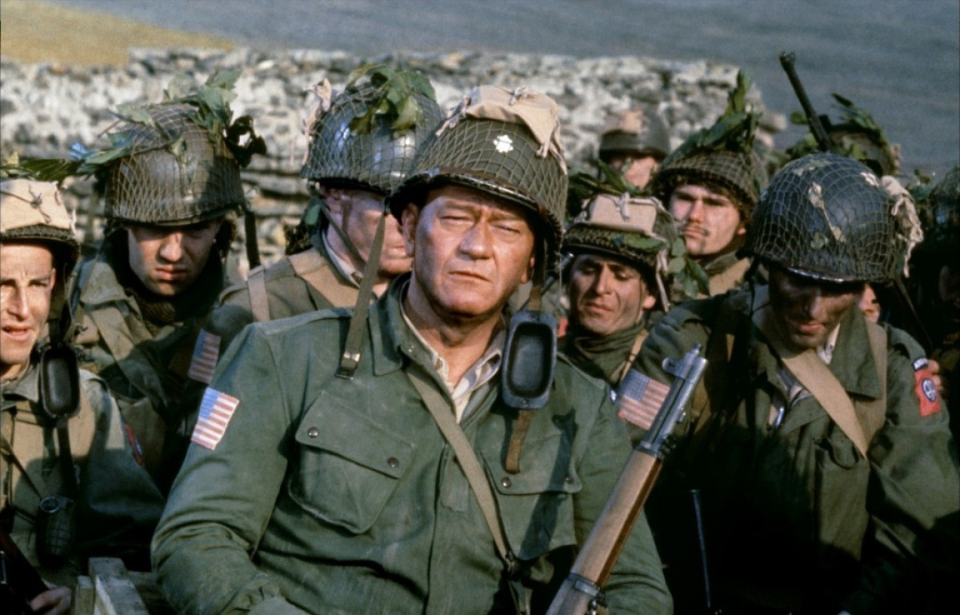Introduction
Released in 1962, The Longest Day is an epic war film that meticulously depicts the events of June 6, 1944—D-Day, the pivotal moment in World War II when Allied forces launched the Normandy invasion to liberate Western Europe from Nazi occupation. Based on Cornelius Ryan’s 1959 book, the film offers a detailed, multi-perspective narrative featuring an ensemble cast that includes John Wayne, Richard Burton, Henry Fonda, Robert Mitchum, Sean Connery, and many others. Directed by Ken Annakin, Andrew Marton, Bernhard Wicki, and Darryl F. Zanuck, the movie remains one of the most ambitious and historically significant war films ever made.
Historical Context and Production
During the early 1960s, Hollywood was keen on producing large-scale, historically authentic war films. The Longest Day was an unprecedented project, notable for its use of three different directors to handle American, British, and German perspectives separately, thus preserving the authenticity of each side’s viewpoint. The film was also notable for using actors speaking their native languages, with German and French dialogue left untranslated in some versions to maintain realism.
The film was shot on location in France, with many of the actual landing sites used for the production. The cinematography was groundbreaking for its time, employing black-and-white film to enhance the documentary-like realism. Darryl F. Zanuck, the producer, personally oversaw the production and ensured historical accuracy by consulting military experts and D-Day veterans.
Plot Summary
The film presents a panoramic view of D-Day, unfolding across multiple locations and perspectives—from the German high command to the Allied leaders and soldiers on the ground. The narrative is structured in different phases, covering pre-invasion preparations, the initial airborne landings, the beach assaults, and the subsequent inland battles.
1. The German Perspective
The film opens with German officers, including Field Marshal Erwin Rommel (played by Werner Hinz), discussing the possibility of an Allied invasion. Rommel warns his superiors that the Atlantic Wall defenses will not be enough to stop a determined assault. However, German commanders, particularly General Von Rundstedt and General Jodl, remain skeptical, convinced that any invasion will occur at Pas-de-Calais rather than Normandy. The uncertainty within the German high command and their reliance on Hitler’s personal approval for reinforcements play a crucial role in the events that follow.
2. The Allied High Command and Preparations
On the Allied side, preparations for Operation Overlord are well underway. General Dwight D. Eisenhower (Henry Grace) gives the final order to proceed with the invasion despite concerns about bad weather. Key Allied figures include General Norman Cota (Robert Mitchum), Lord Lovat (Peter Lawford), and Brigadier General Theodore Roosevelt Jr. (Henry Fonda), each of whom plays a critical role in leading their troops on D-Day.
3. The Airborne Assault
The first wave of the invasion consists of paratroopers from the American 82nd and 101st Airborne Divisions and the British 6th Airborne Division. Major John Howard (Richard Todd) and his men execute a glider assault on Pegasus Bridge, while American paratroopers land near Sainte-Mère-Église, where some are mistakenly dropped into the town square, leading to heavy casualties. The film captures the confusion, bravery, and chaos of these nighttime drops.
4. The Beach Landings
The main invasion begins at dawn with amphibious assaults on Omaha, Utah, Gold, Juno, and Sword Beaches. The most intense combat is shown at Omaha Beach, where American forces face fierce German resistance. General Cota (Robert Mitchum) is portrayed rallying his men under heavy fire, famously urging them to “get off the beach!” The landings at Gold, Juno, and Sword Beaches are depicted with British and Canadian troops pushing inland.
5. The Aftermath and Victory
As the Allies secure the beaches and push forward, the film portrays German confusion and slow response due to Hitler’s insistence on holding armored reserves back. The final sequences show Allied forces linking up, symbolizing the beginning of the liberation of France.
Themes and Significance
1. The Realities of War
Unlike many war films of its era, The Longest Day does not glorify combat. Instead, it presents the chaos, heroism, and brutality of warfare in an unfiltered manner. The film effectively portrays the fog of war, confusion in communication, and the human cost of battle.
2. Leadership and Strategy
The film highlights the challenges of military leadership, showing the critical decisions made by both Allied and German commanders. It also emphasizes the importance of coordination between different branches of the military—army, navy, and air force.
3. International Collaboration
By showcasing the perspectives of Americans, British, Canadians, French, and Germans, The Longest Day acknowledges that D-Day was a multinational effort. It also gives credit to the French Resistance, which played a key role in disrupting German communication lines.
Cinematography and Direction
The decision to shoot in black and white gives the film a documentary-like quality, making it more realistic and immersive. The use of wide shots to depict large-scale battles, combined with close-ups of individual soldiers, allows viewers to appreciate both the grand scope and personal experiences of D-Day. The directors ensured that historical accuracy was maintained, avoiding exaggerated heroics in favor of realism.
Legacy and Reception
Upon its release, The Longest Day was a critical and commercial success, winning two Academy Awards for Best Cinematography and Best Special Effects. It set a new standard for war films, influencing later movies such as Saving Private Ryan (1998) and Dunkirk (2017).
The film also played a role in educating audiences about D-Day, as many veterans praised its authenticity. It remains a staple in historical war cinema, often screened on anniversaries of D-Day.
Conclusion
The Longest Day stands as one of the most ambitious and historically accurate war films ever made. With its ensemble cast, meticulous storytelling, and gripping realism, the movie remains a powerful tribute to the bravery and sacrifice of the soldiers who fought on D-Day. More than just a film, it serves as a historical document, ensuring that the events of June 6, 1944, are remembered for generations to come.

